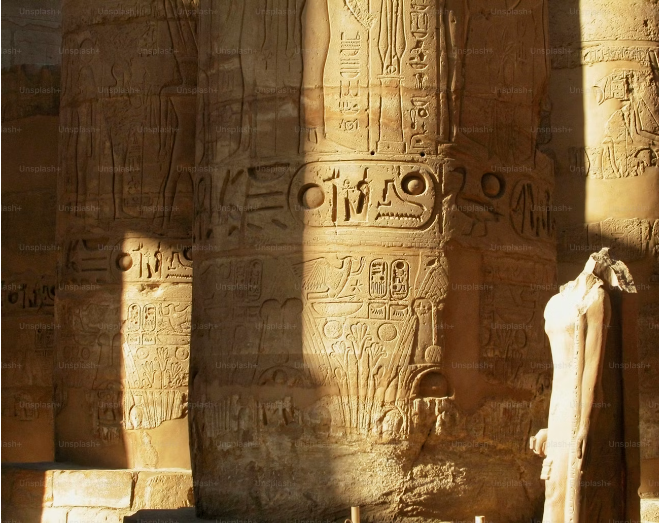When we think of ancient art, we often imagine dusty museums or crumbling ruins, but Ancient Artz is anything but boring. It’s a time capsule of human emotion, ambition, and creativity—far from just pretty pictures and old statues. Ancient Artz is where history meets artistic genius, where civilizations expressed their deepest beliefs and most visionary ideas. Think of it as the ultimate mashup of culture, power, and timeless beauty.
Intrigued? You should be. Let’s dive into the mind-blowing world of Ancient Artz—and uncover why these masterpieces still captivate us today.
What is Ancient Artz? More Than Just Old Stuff
Forget the bland textbook definitions. Ancient Artz refers to the breathtaking creativity of early civilizations, whose masterpieces have survived for millennia. From the mystifying cave paintings of prehistoric times to the colossal statues of Egypt, Ancient Artz is a treasure trove of stories, beliefs, and innovations. Each piece isn’t just art—it’s a visual language, one that gives us direct access to the minds and hearts of ancient creators.
Why Ancient Artz Still Matters
You might be wondering—why should we care? Because Ancient Artz is like the OG blueprint for everything that came after. It’s the spark that ignited centuries of artistic evolution, influencing everything from modern architecture to pop culture. Whether you’re an art enthusiast or just curious about how ancient societies rolled, Ancient Artz is a gateway to understanding human creativity at its peak.
Prehistoric Artz: The First Artistic Rebels
Cave Paintings: Where It All Began
Let’s start from the very beginning, with the earliest form of human artistic expression—prehistoric cave paintings. Found in the caves of Lascaux, France, these mesmerizing paintings of wild animals, created using natural pigments, are over 17,000 years old. Imagine early humans, painting by firelight, giving life to walls that would later echo through time.
Why Did They Paint? Theories and Mysteries
Were these cave paintings just primitive graffiti? Probably not. Some believe they were part of ancient rituals or attempts to connect with the spirit world. Others argue that they were early lessons in hunting or storytelling. Whatever the reason, these paintings show us that even early humans couldn’t resist the urge to leave their mark.
The Mystical Brilliance of Ancient Egyptian Artz
Monumental Magic: Pyramids, Sphinxes, and Beyond
When we talk about Ancient Egyptian Artz, we’re talking about masterpieces on a colossal scale. The Great Pyramids of Giza and the enigmatic Sphinx stand as testaments to the Egyptians’ obsession with immortality and the afterlife. Egyptian art wasn’t just decoration—it was power, it was purpose, and every piece was a step toward eternity.
Hieroglyphics: The World’s First Art-Story Fusion
One of the most iconic aspects of Egyptian art is hieroglyphics. These intricate symbols were both art and communication, immortalizing stories of gods, pharaohs, and everyday life. They turned walls into epic storyboards, blending language and visuals in a way that feels strikingly modern.
Mesopotamian Artz: The Urban Pioneers
Ziggurats: Towering Temples to the Gods
In Mesopotamia, often called the “Cradle of Civilization,” art took on a whole new dimension with the creation of ziggurats—massive, tiered temples designed to bridge the gap between the heavens and Earth. These architectural marvels weren’t just buildings; they were spiritual ladders, linking humanity to the divine.
Cylinder Seals: Tiny Artz with Big Impact
While the towering ziggurats dominated the skyline, Mesopotamians also focused on small but significant pieces like cylinder seals. These intricately engraved stones were used to authenticate documents and possessions, becoming ancient stamps of identity. Tiny but powerful, they turned art into a personal and practical expression.
Greek Artz: The Pursuit of Perfection
Sculpting the Gods: Greek Idealism in Marble
The Greeks took ancient art to dazzling new heights by perfecting the human form. Sculptors like Phidias and Polykleitos created lifelike statues that celebrated both mortal and divine beauty. Every curve, every muscle was sculpted to mathematical precision, creating a legacy of perfection in form that still influences modern art.
Greek Pottery: Everyday Objects Turned Epic
Greek pottery wasn’t just for storage; it was a canvas for stories of gods, heroes, and daily life. Imagine drinking wine from a cup that depicts the myth of Achilles—that’s how the Greeks did it. These everyday objects were infused with epic narratives, making even the most mundane activities an artistic experience.
The Parthenon: A Masterpiece in Architecture
Perched high on the Acropolis of Athens, the Parthenon is a marvel of symmetry and proportion. Dedicated to the goddess Athena, this temple is a masterclass in architectural brilliance, with sculptures and reliefs that embody the Greek obsession with beauty and balance.
Roman Artz: Realism and Grandeur Collide
Frescoes and Mosaics: Immersive Art Experiences
When it came to Roman Artz, the emphasis was on grandeur and realism. Romans didn’t just decorate their homes; they turned them into immersive art experiences. Frescoes and mosaics covered walls and floors, turning every surface into a canvas. Roman villas were like art galleries you could live in.
Sculptures: Capturing Every Wrinkle
Roman sculptures were all about realism. Unlike the idealized beauty of Greek art, Roman busts captured every wrinkle and scar, portraying emperors and citizens as they truly were. These works were about celebrating the real and the raw—a testament to the Roman love for power and legacy.
How Ancient Artz Still Inspires Today
Echoes in Modern Art and Architecture
It’s impossible to walk through a modern city without seeing traces of Ancient Artz. From the neoclassical buildings that dominate capitals worldwide to the minimalist designs inspired by ancient simplicity, the influence is undeniable. Today’s artists and architects still draw from the techniques and philosophies of the ancient world, ensuring that the legacy of Ancient Artz lives on.
Ancient Artz in Pop Culture
Movies, video games, and fashion all have a deep love affair with ancient art. Think of films like “Troy”, “300”, or even the Assassin’s Creed game series—they all borrow from ancient aesthetics, reviving the past in thrilling ways for a modern audience.
Conclusion: Why Ancient Artz Will Always Matter
So, what’s the secret to Ancient Artz? It’s simple—art, in all its forms, is eternal. These ancient masterpieces aren’t just dusty relics of a long-gone past; they are living, breathing inspirations that continue to influence everything from architecture to film to fashion. Ancient Artz proves that creativity knows no bounds, no time limits. It’s a reflection of who we were, who we are, and who we might become.
In a world constantly racing forward, Ancient Artz reminds us that the most timeless ideas are often the ones forged in the distant past.










